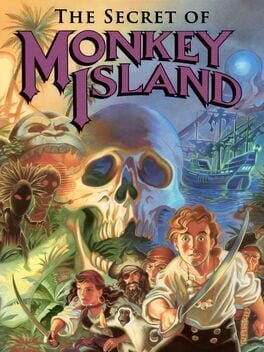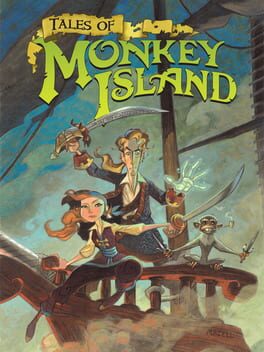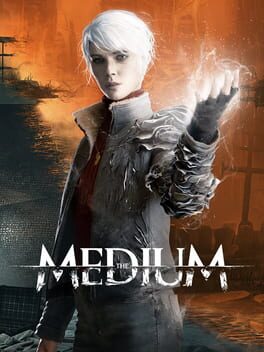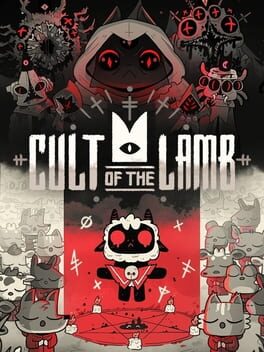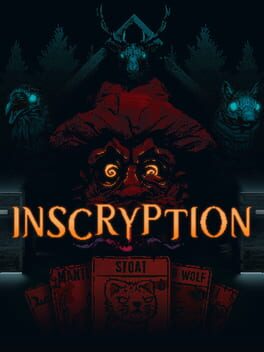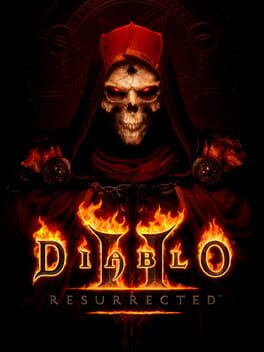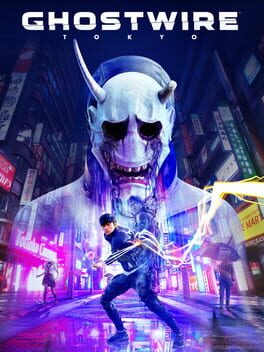x_manicure_x
“The Secret of Monkey Island” might be one of the very first video games I played as a child. Even though I couldn’t even read English, I remember playing the demo at least a dozen times. It had the troll standing at the Mêlée docks to prevent you from getting out. No matter if I couldn’t figure out any of the puzzles, I just loved walking around and enjoying the setting and atmosphere.
My parents got me a legit copy a couple of years later, and despite the game not being the experience I had expected, I was totally blown away by the humor. Just like Guybrush, I was dreaming of an epic pirate adventure, and in the end, I had to come to terms with the fact that I was just another clumsy kid unfit for pirate life, but with the heart in the right place.
The plot is merely an excuse for what is essentially a genre parody littered with puns and pop culture references. Things play out as you would expect for the most part. yet I thought the twist they got with Elaine’s characters wasn’t as obvious back then.
The puzzles are part of the humor, to the point that many times the puzzles are the jokes and vice versa. The solutions are slightly more intuitive than the average LucasArt graphic adventure, with only a few absurd item combinations and pun-led tasks that could get frustrating. The pacing is generally tight, and the variety of things to do is impressive for a game this old. However, walking back and forth between areas can sometimes get a little tiresome.
My parents got me a legit copy a couple of years later, and despite the game not being the experience I had expected, I was totally blown away by the humor. Just like Guybrush, I was dreaming of an epic pirate adventure, and in the end, I had to come to terms with the fact that I was just another clumsy kid unfit for pirate life, but with the heart in the right place.
The plot is merely an excuse for what is essentially a genre parody littered with puns and pop culture references. Things play out as you would expect for the most part. yet I thought the twist they got with Elaine’s characters wasn’t as obvious back then.
The puzzles are part of the humor, to the point that many times the puzzles are the jokes and vice versa. The solutions are slightly more intuitive than the average LucasArt graphic adventure, with only a few absurd item combinations and pun-led tasks that could get frustrating. The pacing is generally tight, and the variety of things to do is impressive for a game this old. However, walking back and forth between areas can sometimes get a little tiresome.
“Escape from Monkey Island” came out during the darkest time of 3D graphics, and it shows. Not only do the locations and characters look awful, but the control system also has to be one of the most user-unfriendly in the history of graphic adventures. Moving around the maps and interacting with objects can get incredibly frustrating, and it’s very easy to miss interactive areas of the screen without a mouse.
That aside, it’s hard to deny that this was the series’ first serious attempt at telling a story with a fleshed-out plot. A bad attempt, but at least they tried. Things like the infamous Toothrot retcon are an insult to the players, but at the same time, we can’t deny that the spirit of the original games was built around self-deprecation and continuous betrayal of the fans’ expectations. I think the problem is that the franchise has adopted a more childish and cartoony approach as it progressed over the years. “Escape” started along the same lines as “Curse”, but it really gets worse and worse as it progresses.
The puzzles also get incredibly tedious and frustrating for no particular reason, with the parrot one winning the crown for the most annoying activity to engage in a video game. Monkey Kombat has been mentioned by most players as their biggest turn-off, but I thought it was a decent alternative to the insult battles. At least it made me use my brain, unlike the other puzzles. Most of the second half just had me try all objects on everything without even knowing what I was doing, most of the time not even sure about what my objective was supposed to be. It’s not that the puzzles are built around a pun or absurd ways to get to a relatively straightforward outcome, they are just random item combinations to troll the player. There were bits like that in the previous games too, but here it felt like they really jumped the shark in all possible ways.
There are also a million bugs waiting for you, including game-breaking ones waiting for you. I would recommend not playing altogether, but if you do, make sure to save often and keep multiple saves. I also needed to download a separate launcher to play my Steam copy.
That aside, it’s hard to deny that this was the series’ first serious attempt at telling a story with a fleshed-out plot. A bad attempt, but at least they tried. Things like the infamous Toothrot retcon are an insult to the players, but at the same time, we can’t deny that the spirit of the original games was built around self-deprecation and continuous betrayal of the fans’ expectations. I think the problem is that the franchise has adopted a more childish and cartoony approach as it progressed over the years. “Escape” started along the same lines as “Curse”, but it really gets worse and worse as it progresses.
The puzzles also get incredibly tedious and frustrating for no particular reason, with the parrot one winning the crown for the most annoying activity to engage in a video game. Monkey Kombat has been mentioned by most players as their biggest turn-off, but I thought it was a decent alternative to the insult battles. At least it made me use my brain, unlike the other puzzles. Most of the second half just had me try all objects on everything without even knowing what I was doing, most of the time not even sure about what my objective was supposed to be. It’s not that the puzzles are built around a pun or absurd ways to get to a relatively straightforward outcome, they are just random item combinations to troll the player. There were bits like that in the previous games too, but here it felt like they really jumped the shark in all possible ways.
There are also a million bugs waiting for you, including game-breaking ones waiting for you. I would recommend not playing altogether, but if you do, make sure to save often and keep multiple saves. I also needed to download a separate launcher to play my Steam copy.
Although I expected “Tales of Monkey Island” to be following the same structure as other Telltale games, I was pleasantly surprised to find out it felt just like any other classic chapter in the Monkey Island franchise. The plot might not be the most interesting ever, but it’s hands down the most fleshed-out in the series so far. I particularly liked the way they played around with LeChuck’s character to use him in unexpected ways. On the other hand, Elaine felt a little off both before and after the pox. She’s definitely been the hardest character to adapt from “Curse” onwards. A lot of new characters and locations have also been introduced, and, although not memorable, they managed to expand the MI world in new ways.
The puzzles are a mixed bag, but they are generally more accessible than they have been in the past. The most frustrating thing gameplay-wise has been the new inventory together with the item combination system. Even when knowing the solution to a puzzle, you would get stuck for skipping a dialogue or just because you didn’t use the items or commands the exact same way the developers had it in mind.
Despite the humor being able to capture the original spirit of the series, the visuals are probably the biggest flaw of the game. Although not as awful as “Escape from Monkey Island”, the 3D graphics are still quite ugly, and the atmospheric touch of the first two games remains unmatched.
The puzzles are a mixed bag, but they are generally more accessible than they have been in the past. The most frustrating thing gameplay-wise has been the new inventory together with the item combination system. Even when knowing the solution to a puzzle, you would get stuck for skipping a dialogue or just because you didn’t use the items or commands the exact same way the developers had it in mind.
Despite the humor being able to capture the original spirit of the series, the visuals are probably the biggest flaw of the game. Although not as awful as “Escape from Monkey Island”, the 3D graphics are still quite ugly, and the atmospheric touch of the first two games remains unmatched.
2022
If you liked the “God of War” soft reboot in 2018, here are 70 more hours of pretty much the same thing to enjoy. For better or worse, it’s the exact same game with wider explorable areas, more playable characters, and a slightly more complex combat system.
I have nothing against the new direction the series is taking, but if the focus is supposed to be on the narrative, the guys at Santa Monica still have a lot to learn from their colleagues at Naughty Dog. The characters lack depth, and the overall direction and pacing are still quite bland for what is supposed to be one of the most cinematic gaming experiences of the last few years. It feels like they could have provided a much more impactful and balanced experience by cutting completion time to half and focusing only on new content, taking care more about each scene and each area, and making sure that each element is meant to add to the experience or provide further insight on the plot and characters. The characters run in circles for dozens of hours, and then it all explodes in the last thirty minutes or so. Every chapter to that point essentially feels the same, with the areas looking different but the same actions being repeated all over again. It’s also weird that the main plot takes so long to complete despite important plot points from the previous game being resolved in contrived and rushed ways, wiping out the dramatic impact of big events that have previously happened. At times it feels like they are going too slow, at times it feels strangely rushed.
I didn’t mind the puzzles, but it’s true that the NPCs tell you the solution right away spoiling the fun. There are also a bit too many chores to do during parts of the chapters that are supposed to be emotionally impacting, at times even killing the tension.
The graphics obviously improved, yet some characters like Freya might have needed some more brushing up.
The tasks to complete this time as essentially the same as in the previous game. The most noticeable difference is the size of the sandboxes, as this time we get to visit multiple worlds full of side-quests and optional areas to explore. The free roaming ended up extending my experience to the point that I got exhausted before the end of the main plot, but at the same time, I enjoyed exploring every nook and cranny and opening doors and shortcuts as I would do in a soulslike. Combat is obviously not as challenging, but there is a degree of complexity to it if we compare it with the previous games in the series.
The most frustrating chore was beating the additional bosses. I liked challenging the Valkyries last time, but the berserkers here felt like a joke, a desperate attempt at stretching gameplay hours even further. The last one was a true nightmare and forced me to lower difficulty levels for the first time. Maybe I misunderstood the whole combat system, or maybe the developers were just trolling me. And finding cheese builds online doesn’t count as a strategy.
So, is it a better game? Technically, it is. Did it feel as fresh? Obviously not. But this is a concern that’s popping up for most of Sony’s first-person games, which are really starting to all feel the same for too many years.
I have nothing against the new direction the series is taking, but if the focus is supposed to be on the narrative, the guys at Santa Monica still have a lot to learn from their colleagues at Naughty Dog. The characters lack depth, and the overall direction and pacing are still quite bland for what is supposed to be one of the most cinematic gaming experiences of the last few years. It feels like they could have provided a much more impactful and balanced experience by cutting completion time to half and focusing only on new content, taking care more about each scene and each area, and making sure that each element is meant to add to the experience or provide further insight on the plot and characters. The characters run in circles for dozens of hours, and then it all explodes in the last thirty minutes or so. Every chapter to that point essentially feels the same, with the areas looking different but the same actions being repeated all over again. It’s also weird that the main plot takes so long to complete despite important plot points from the previous game being resolved in contrived and rushed ways, wiping out the dramatic impact of big events that have previously happened. At times it feels like they are going too slow, at times it feels strangely rushed.
I didn’t mind the puzzles, but it’s true that the NPCs tell you the solution right away spoiling the fun. There are also a bit too many chores to do during parts of the chapters that are supposed to be emotionally impacting, at times even killing the tension.
The graphics obviously improved, yet some characters like Freya might have needed some more brushing up.
The tasks to complete this time as essentially the same as in the previous game. The most noticeable difference is the size of the sandboxes, as this time we get to visit multiple worlds full of side-quests and optional areas to explore. The free roaming ended up extending my experience to the point that I got exhausted before the end of the main plot, but at the same time, I enjoyed exploring every nook and cranny and opening doors and shortcuts as I would do in a soulslike. Combat is obviously not as challenging, but there is a degree of complexity to it if we compare it with the previous games in the series.
The most frustrating chore was beating the additional bosses. I liked challenging the Valkyries last time, but the berserkers here felt like a joke, a desperate attempt at stretching gameplay hours even further. The last one was a true nightmare and forced me to lower difficulty levels for the first time. Maybe I misunderstood the whole combat system, or maybe the developers were just trolling me. And finding cheese builds online doesn’t count as a strategy.
So, is it a better game? Technically, it is. Did it feel as fresh? Obviously not. But this is a concern that’s popping up for most of Sony’s first-person games, which are really starting to all feel the same for too many years.
2021
Old-school survival horror games clearly inspired by Silent Hill. The difference is that there is no combat, and the dynamics are mostly based on puzzles to be solved between two realities. I don’t mind the clunky controls, but for a game that is entirely based on puzzles, it’s excruciatingly boring to find out that the solutions always lie a few steps away. When you get stuck, it’s because the map is not clear, or because the controls are not working properly. Eventually, it all turns into a walking simulator with a mediocre plot and an intriguing steamy atmosphere as the only element worth the journey. Although I wouldn’t have called it a negative experience, the stupid ending was the final nail in the coffin.
2022
An accessible hybrid of an Animal Crossing-like sim and a Hades-like roguelite. Either element remains quite basic, but the fact that you can spend what you’ve earned in combat in building a village and spreading your cult makes the experience much more rewarding and motivating.
Days in-game pass so fast that I was barely able to catch up with all the activities available, yet I still got the chance to focus on either the simulation or dungeon crawling depending on my mood each day. With the difficulty set on default, the level of challenge felt just right if not a little too easy towards the end, granted you took proper care of your cult and followers.
Although your followers are treated as little more than expendables to eventually sacrifice in exchange for experience and resources, I have to say I would have appreciated more focus on each character. There are hints at their personal traits as well as their interpersonal relationships, but they rarely impact the gameplay. The role of doctrines in morphing the way the cult acts could also have provided much more depth if properly expanded.
All in all, the game still guaranteed a lot of quality time and lighthearted fun, especially for mobile sessions. The ending and final boss felt a little underwhelming, but it might also be due to the fact that I ended up maxing up my stats a little too soon.
Days in-game pass so fast that I was barely able to catch up with all the activities available, yet I still got the chance to focus on either the simulation or dungeon crawling depending on my mood each day. With the difficulty set on default, the level of challenge felt just right if not a little too easy towards the end, granted you took proper care of your cult and followers.
Although your followers are treated as little more than expendables to eventually sacrifice in exchange for experience and resources, I have to say I would have appreciated more focus on each character. There are hints at their personal traits as well as their interpersonal relationships, but they rarely impact the gameplay. The role of doctrines in morphing the way the cult acts could also have provided much more depth if properly expanded.
All in all, the game still guaranteed a lot of quality time and lighthearted fun, especially for mobile sessions. The ending and final boss felt a little underwhelming, but it might also be due to the fact that I ended up maxing up my stats a little too soon.
2021
To put it simply, it’s a brainier version of card battles games. The roguelite elements initially make the experience quite challenging, but the difficulty drastically drops from the first act onwards. After playing, I wish there was a physical edition available, but I guess it would be hard to keep all the details in mind and buff your cards in real life.
The game is divided into three acts with a few differences in the gameplay. The main dynamics are usually the same, but at times it might feel like playing a whole different game. Still, it’s out of doubt that most of the effort went into the first and final acts. The meta narration also felt surprisingly strong despite relying on a low budget and amateurish live-action footage. The last thirty minutes also feature a lot of material and visual ideas I wish they had fleshed out into a fourth act, if not a separate game.
The game is divided into three acts with a few differences in the gameplay. The main dynamics are usually the same, but at times it might feel like playing a whole different game. Still, it’s out of doubt that most of the effort went into the first and final acts. The meta narration also felt surprisingly strong despite relying on a low budget and amateurish live-action footage. The last thirty minutes also feature a lot of material and visual ideas I wish they had fleshed out into a fourth act, if not a separate game.
2007
2011
“Portal 2” takes the innovative and addictive gameplay of its predecessor and expands upon it in every way imaginable. The puzzles are more complex and diverse, featuring new elements like laser redirection and the introduction of gels that alter surface properties, adding new layers of strategy and experimentation. The game also introduces the hilarious character of Wheatley, adding humor and depth to the storyline.
Although the game can become slightly repetitive after extended play sessions, it remains an engaging experience that rewards players for thinking out of the box. Best suited for quick sessions on mobile platforms.
Although the game can become slightly repetitive after extended play sessions, it remains an engaging experience that rewards players for thinking out of the box. Best suited for quick sessions on mobile platforms.
I have fond memories of playing the original "Diablo II" at my friend's house in elementary school, as my parents wouldn't buy me the game. We would replay act one over and over again, and we'd always get stuck in act two. Years later, I got my hands on "Diablo III" on PS3, but it quickly lost its luster for me. It just felt like it wasn’t worth the limited time I had to play on consoles. However, when I saw this “Diablo II” remake available for Switch, I knew I had to give it a chance.
Even though I don’t think I got any of the plot, the gameplay loop is so addictively simple that I started from killing time with it to desperately finding time to play with it.
While the graphics are vastly improved, the tiny character models make it difficult to fully appreciate the visual overhaul on mobile consoles. Despite that, I still enjoyed playing as a Necromancer (as usual). Even though I had to spam potions in the late chapters, I found the game to be relatively easy to complete, with the exception of Baal and Duriel.
The game's mechanics and progression system have aged well, and the new quality-of-life features make it more accessible to newcomers.
Even though I don’t think I got any of the plot, the gameplay loop is so addictively simple that I started from killing time with it to desperately finding time to play with it.
While the graphics are vastly improved, the tiny character models make it difficult to fully appreciate the visual overhaul on mobile consoles. Despite that, I still enjoyed playing as a Necromancer (as usual). Even though I had to spam potions in the late chapters, I found the game to be relatively easy to complete, with the exception of Baal and Duriel.
The game's mechanics and progression system have aged well, and the new quality-of-life features make it more accessible to newcomers.
2023
A relaxing fishing experience intertwined with captivating elements of Lovecraftian horror. The gameplay mechanics are refreshingly uncomplicated, with a simple yet engaging task of timing button presses to catch fish, fitting everything in your inventory like in a Tetris game, and upgrading equipment. However, spending too much time out in the sea can lead to unsettling hallucinations, jeopardizing navigation and even exposing players to the threat of mysterious sea creatures.
The game is initially addictive, immersing the player in its unique atmosphere. Yet, it must be acknowledged that its depth may not sustain engagement beyond a few hours. While a diverse array of fish species awaits collection, the completion of main quests felt satisfying enough, leaving little desire to explore further. It is worth noting that although the game grants players immediate freedom to explore the whole map, adherence to the predetermined order of main quests becomes imperative, as specific equipment will be needed in the right order.
The game is initially addictive, immersing the player in its unique atmosphere. Yet, it must be acknowledged that its depth may not sustain engagement beyond a few hours. While a diverse array of fish species awaits collection, the completion of main quests felt satisfying enough, leaving little desire to explore further. It is worth noting that although the game grants players immediate freedom to explore the whole map, adherence to the predetermined order of main quests becomes imperative, as specific equipment will be needed in the right order.
2022
"Ghostwire: Tokyo" beckons players into the bustling streets of Shibuya, inviting them to confront ghosts and spirits in a first-person shooter experience where elemental spells replace conventional firearms. The combat mechanics, though not overly intricate, manage to deliver fun through their brisk pace and vibrant light effects. The creatures' designs further amplify the enjoyment, especially when messing around the environment with glitchy effects and dreamy scripted events.
Unfortunately, the core narrative and main campaign don't meet the expectations set by the gameplay. They come across as rushed and half-baked. Nonetheless, these shortcomings find their counterbalance in the game's array of side quests and collectibles. These aspects prove to be the truly rewarding and enjoyable facets of the gameplay. My recommendation would be to rush through the main campaign and then enjoy strolling through the map and enjoying the exploration. I wish I had more time to do the trophies too...
An evident dedication to precision manifests in the game's faithful recreation of Shibuya's main streets, where landmarks and famous buildings are painstakingly reproduced and easily recognizable to those familiar with the area. While the game seems to have been designed to captivate Western players, the Japanese origins of the team is reflected in the meticulous replication of objects and everyday life elements, even more than real-life setting games like "Yakuza".
The freedom of movement within the game is both seamless and gratifying, free from the interruption of transitional cutscenes or protracted animations that might impede the gameplay. Moreover, the vertical exploration of select buildings and spaces adds an extra layer of immersion, allowing the exploration of underground areas and jumping from one building to another.
In short, while "Ghostwire: Tokyo" falls short in terms of its central narrative, its captivating recreation of Shibuya, attention to detail, and enjoyable diversions found in side quests offer a satisfying and immersive gameplay experience.
Unfortunately, the core narrative and main campaign don't meet the expectations set by the gameplay. They come across as rushed and half-baked. Nonetheless, these shortcomings find their counterbalance in the game's array of side quests and collectibles. These aspects prove to be the truly rewarding and enjoyable facets of the gameplay. My recommendation would be to rush through the main campaign and then enjoy strolling through the map and enjoying the exploration. I wish I had more time to do the trophies too...
An evident dedication to precision manifests in the game's faithful recreation of Shibuya's main streets, where landmarks and famous buildings are painstakingly reproduced and easily recognizable to those familiar with the area. While the game seems to have been designed to captivate Western players, the Japanese origins of the team is reflected in the meticulous replication of objects and everyday life elements, even more than real-life setting games like "Yakuza".
The freedom of movement within the game is both seamless and gratifying, free from the interruption of transitional cutscenes or protracted animations that might impede the gameplay. Moreover, the vertical exploration of select buildings and spaces adds an extra layer of immersion, allowing the exploration of underground areas and jumping from one building to another.
In short, while "Ghostwire: Tokyo" falls short in terms of its central narrative, its captivating recreation of Shibuya, attention to detail, and enjoyable diversions found in side quests offer a satisfying and immersive gameplay experience.
2023
Having been a loyal fan of the "Final Fantasy" series for decades, I've witnessed and appreciated the various shifts and transformations that Square has undergone to evolve its franchise. While some of their experiments have borne fruit and others have stumbled, they've always exhibited a willingness to innovate and understand the market. However, "Final Fantasy XVI" stands out negatively not because of its shift towards action-oriented gameplay, but due to its failure to understand and meet contemporary industry benchmarks under all aspects except graphics.
First and foremost, it's difficult to categorize this as an action RPG, for it seems to lack any RPG element whatsoever. The main inspiration for the gameplay seems to be the last couple of “God of War” chapters, and I know it sounds like a joke to say that even those two games have more prominent RPG elements than “Final Fantasy XVI”. Not only there is no party other than a dog sidekick you can’t even customize or upgrade, but the skill tree is also ridiculous, and there are not even statuses or elemental strengths and weaknesses to add depth and strategy to the combat. Combat mostly boils down to button mashing and nervous dodging. There are macro-areas, but they are all empty with nothing to motivate the player to explore and collect loot. Sometimes you cross empty valleys and deserts to pick up 3 gils or a potion. The equipment, crafting, and shop system are barebone, further undermining the drive for loot or pre-battle strategizing. On top of that, there are no puzzles nor side activities other than hunting.
Alternatively, if we regarded it as a pure action game, the combat system is astonishingly rudimentary, failing to hold its own against titles like "Devil May Cry." There are no combos, no attack synergy, no variables.
The game does, however, excel in lore and world-building, though it's essential to note that major cities on the map remain inaccessible, experienced merely through battle sequences and cutscenes. A substantial portion of the map is also off-limits, owing to an in-game plague that destroyed most areas. The plot has been mentioned as one of the redeeming factors, but while I have to say it’s not bad, it doesn’t stand out enough to make the game worth playing. The writers' clear infatuation with "Game of Thrones" is evident in world-building and character design, yet the comparison paints "Final Fantasy XVI" as a simplified and juvenile rendition of Martin's world. Characters are largely one-dimensional, often presented in blocks before meeting their end as bosses in an arcade-like progression. Their interactions barely influence or alter the plot, which typically follows a pattern of introducing and defeating the villain of the week. Though the initial hours are tainted by predictable plot twists and stereotypical fantasy tropes, the overarching narrative gets dangerously close to the plot of "Tales of Arise" in its latter stages. The quality of cutscenes is laudable, especially during intense combat phases. The Eikon battles are sparse but reach a level of visual impact only comparable to the Greek gods battles in “God of War III”.
People have been bashing Final Fantasy XIII mostly for its linear nature, but now it seems that it’s not a big deal as far as it’s directed by Yoshida? At least Final Fantasy XIII was shorter and, most of all, more layered with its combat dynamics and RPG elements. “Final Fantasy XVI” might have been just as satisfactory if the good bits were condensed into a 10/15 hour experience. Alas, players are confronted with a 40+ hour ordeal, with at least three-quarters comprising verbose cutscenes that elucidate the obvious and drudging fetch quests.
I'll abstain from overly critiquing the sidequests, as they often hobble similar titles. Yet, it's ridiculous that completing the main plot necessitates engaging in quests like "talk to A, then relay A's message to B, report back to C, then return to A to report what you've heard from B and C. But don’t forget to get back to where B was to give him back this thing." Some quests even seem to challenge players' intelligence, like the one where you're tasked with investigating the disappearance of a girl working at a brothel. The mistress of the brothel gives you the quest, and she has two other employees. Speaking with one of them, right in front of you, yields all the answers required. Definitely a job we only could do, isn’t it? Another instance involves searching for a man who has gone missing in the forest, and, conveniently, he's to be found a few meters away from the entrance. There’s also a weird main quest where you must choose a partner to go and pick up sand at the beach or go shopping, which resolves in merely getting there and picking up the things, with no battle or revelatory dialogue whatsoever. What was the point of even choosing a partner?? Maybe these are things that may work when you fool around with friends in an MMO, but definitely not in a single-player experience already burdened with tedious tasks.
Pacing is further brought down by the purely Japanese custom of sandwiching dialogues, particularly quest-related conversations, between unskippable camera movements, fade-ins, fade-outs, accept buttons, congratulatory graphics, reward screens, little jingles, etc. This indicates a glaring lack of understanding of quality of life in a video game.
While "Final Fantasy XV" succumbed to its ambitions, the polar opposite dilemma plagues "Final Fantasy XVI." Understandably, Square had to play it extremely safe as the saga is in a precarious position, yet in a market inundated with "passive" generic experiences, it's doubtful that this entry will endure in memory after a couple of years.
First and foremost, it's difficult to categorize this as an action RPG, for it seems to lack any RPG element whatsoever. The main inspiration for the gameplay seems to be the last couple of “God of War” chapters, and I know it sounds like a joke to say that even those two games have more prominent RPG elements than “Final Fantasy XVI”. Not only there is no party other than a dog sidekick you can’t even customize or upgrade, but the skill tree is also ridiculous, and there are not even statuses or elemental strengths and weaknesses to add depth and strategy to the combat. Combat mostly boils down to button mashing and nervous dodging. There are macro-areas, but they are all empty with nothing to motivate the player to explore and collect loot. Sometimes you cross empty valleys and deserts to pick up 3 gils or a potion. The equipment, crafting, and shop system are barebone, further undermining the drive for loot or pre-battle strategizing. On top of that, there are no puzzles nor side activities other than hunting.
Alternatively, if we regarded it as a pure action game, the combat system is astonishingly rudimentary, failing to hold its own against titles like "Devil May Cry." There are no combos, no attack synergy, no variables.
The game does, however, excel in lore and world-building, though it's essential to note that major cities on the map remain inaccessible, experienced merely through battle sequences and cutscenes. A substantial portion of the map is also off-limits, owing to an in-game plague that destroyed most areas. The plot has been mentioned as one of the redeeming factors, but while I have to say it’s not bad, it doesn’t stand out enough to make the game worth playing. The writers' clear infatuation with "Game of Thrones" is evident in world-building and character design, yet the comparison paints "Final Fantasy XVI" as a simplified and juvenile rendition of Martin's world. Characters are largely one-dimensional, often presented in blocks before meeting their end as bosses in an arcade-like progression. Their interactions barely influence or alter the plot, which typically follows a pattern of introducing and defeating the villain of the week. Though the initial hours are tainted by predictable plot twists and stereotypical fantasy tropes, the overarching narrative gets dangerously close to the plot of "Tales of Arise" in its latter stages. The quality of cutscenes is laudable, especially during intense combat phases. The Eikon battles are sparse but reach a level of visual impact only comparable to the Greek gods battles in “God of War III”.
People have been bashing Final Fantasy XIII mostly for its linear nature, but now it seems that it’s not a big deal as far as it’s directed by Yoshida? At least Final Fantasy XIII was shorter and, most of all, more layered with its combat dynamics and RPG elements. “Final Fantasy XVI” might have been just as satisfactory if the good bits were condensed into a 10/15 hour experience. Alas, players are confronted with a 40+ hour ordeal, with at least three-quarters comprising verbose cutscenes that elucidate the obvious and drudging fetch quests.
I'll abstain from overly critiquing the sidequests, as they often hobble similar titles. Yet, it's ridiculous that completing the main plot necessitates engaging in quests like "talk to A, then relay A's message to B, report back to C, then return to A to report what you've heard from B and C. But don’t forget to get back to where B was to give him back this thing." Some quests even seem to challenge players' intelligence, like the one where you're tasked with investigating the disappearance of a girl working at a brothel. The mistress of the brothel gives you the quest, and she has two other employees. Speaking with one of them, right in front of you, yields all the answers required. Definitely a job we only could do, isn’t it? Another instance involves searching for a man who has gone missing in the forest, and, conveniently, he's to be found a few meters away from the entrance. There’s also a weird main quest where you must choose a partner to go and pick up sand at the beach or go shopping, which resolves in merely getting there and picking up the things, with no battle or revelatory dialogue whatsoever. What was the point of even choosing a partner?? Maybe these are things that may work when you fool around with friends in an MMO, but definitely not in a single-player experience already burdened with tedious tasks.
Pacing is further brought down by the purely Japanese custom of sandwiching dialogues, particularly quest-related conversations, between unskippable camera movements, fade-ins, fade-outs, accept buttons, congratulatory graphics, reward screens, little jingles, etc. This indicates a glaring lack of understanding of quality of life in a video game.
While "Final Fantasy XV" succumbed to its ambitions, the polar opposite dilemma plagues "Final Fantasy XVI." Understandably, Square had to play it extremely safe as the saga is in a precarious position, yet in a market inundated with "passive" generic experiences, it's doubtful that this entry will endure in memory after a couple of years.
